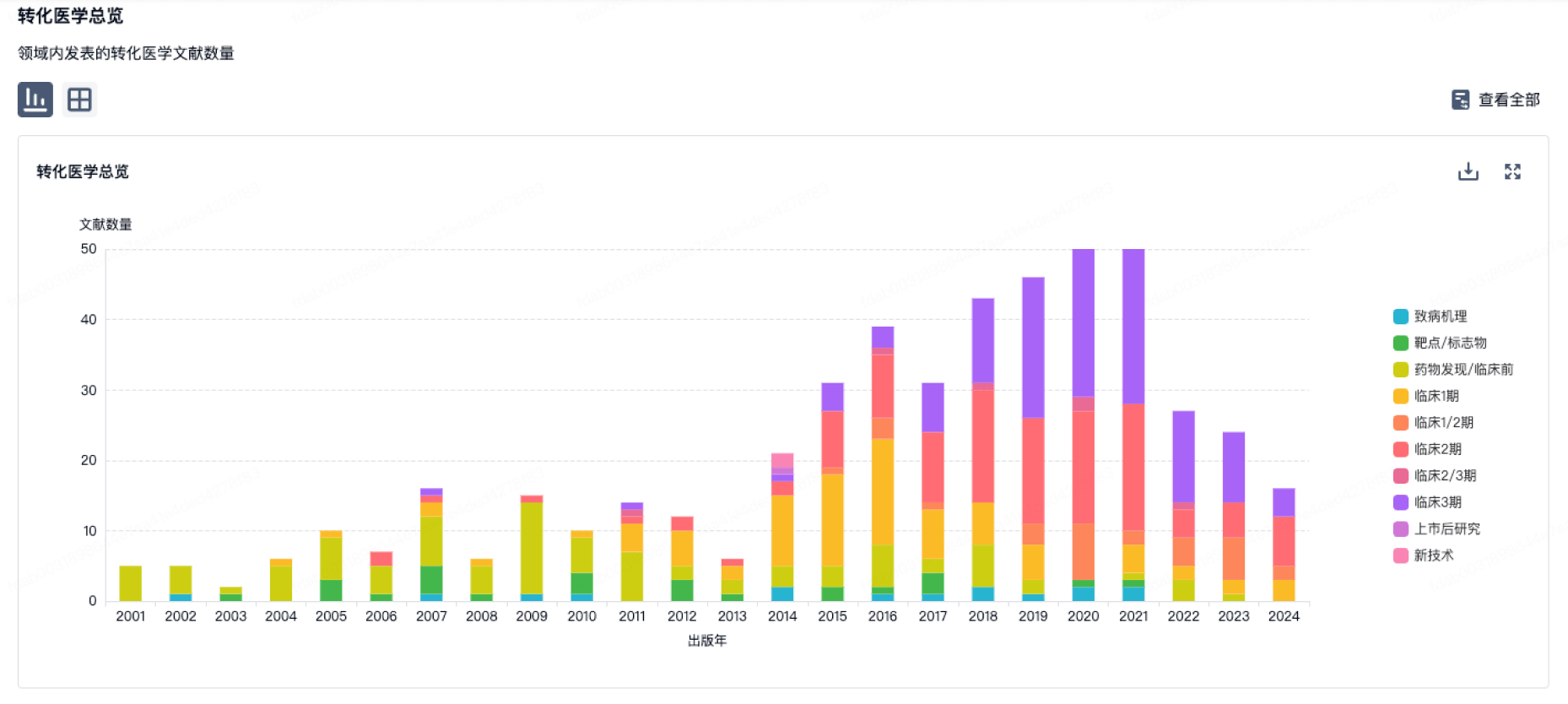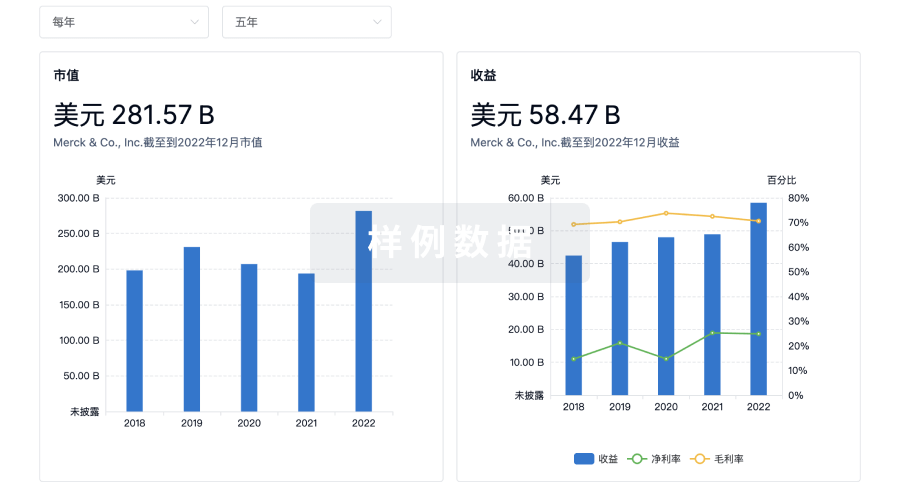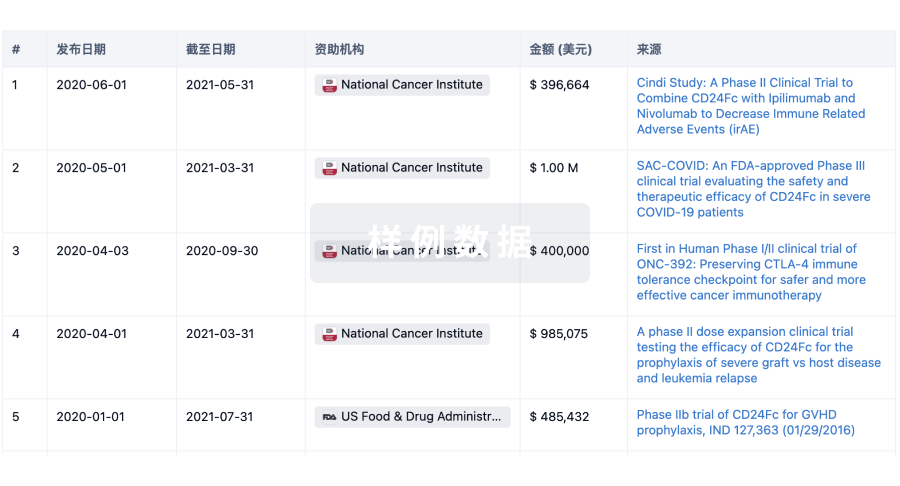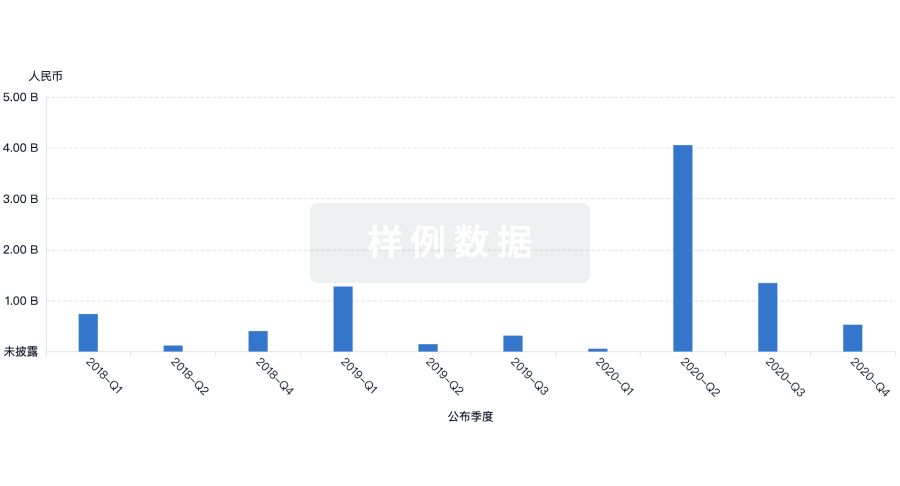预约演示
更新于:2025-08-29
Sinopharm Group Tianjin Co., Ltd.
更新于:2025-08-29
概览
关联
100 项与 国药控股天津有限公司 相关的临床结果
登录后查看更多信息
0 项与 国药控股天津有限公司 相关的专利(医药)
登录后查看更多信息
2
项与 国药控股天津有限公司 相关的文献(医药)2022-06-01·Journal of traditional Chinese medicine = Chung i tsa chih ying wen pan
Efficacy of phospholipid complex of flavonoids from persimmon leaves on atherosclerosis, and possible mechanism.
Article
作者: Kexia, Zhang ; Song, Jin ; Jinpeng, Chen ; Tao, Ren ; Xiaohong, Gai ; Yi, Liu ; Chengwang, Tian
OBJECTIVE:
To investigate the efficacy of phospholipid complex of flavonoids from persimmon leaves (PLF-PC) on atherosclerosis, and to study its mechanism behind the action.
METHODS:
To clarify the constituents of the flavonoids from persimmon leaves (PLF), an ultra-performance liquid chromatography/quadrupole-time-of-flight mass spectrometry method was established. To enhance the anti-atherosclerotic effect of PLF, a newly emerging approach based on the combination of phospholipid complexation technique was employed. PLF-PC was prepared by the solvent-evaporation method then characterized using Fourier transform infrared spectroscopy, Powder X-Ray Diffractometry and Scanning electron microscopy. A model of oxidized low-density lipoprotein-induced injury on human umbilical vein endothelial cells was established to investigate the anti-atherosclerotic effect of PLF-PC versus PLF. The levels of nitric oxide, endothelial nitric oxide synthase, intracellular adhesion molecule-1, reactive oxygen species, superoxide dismutase, tumor necrosis factor-αand nuclear factor-κB were observed assay kits.
RESULTS:
A total of 31 compounds were identified in PLF. PLF-PC showed better anti-atherosclerotic power compared with PLF, moreover, enzyme linked immune-osorbent assay analysis showed that the PLF-PC may effect on endothelial dysfunction and atherosclerosis antioxidant-related mechanisms.
CONCLUSIONS:
Our findings elucidated that PLF-PC significantly enhanced the PLF's efficacy on atherosclerosis.
Medicine4区 · 医学
Safety and efficacy of apatinib combined with iodine-125 in chemotherapy-refractory advanced lung cancer
4区 · 医学
ArticleOA
作者: Qin, Lei ; Jia, Yingjie ; Yin, Shiqiang ; Zhang, Yunchao
Abstract:
Introduction::
Apatinib is a novel anti-angiogenic agent that targets vascular endothelial growth factor receptor-2, and is effective in patients with advanced lung cancer who are refractory to first-line chemotherapy. However, there are limited reports on concurrent apatinib therapy with iodine-125 radioactive seeds brachytherapy in elderly patients with advanced lung cancer.
Patient concerns::
We describe the first reported case of a 70-year-old woman with advanced lung cancer (T3N3M1, stage IV) who received concurrent apatinib and iodine-125 radioactive seeds brachytherapy after the failure of platinum-based doublet chemotherapy
Diagnosis::
The patient was diagnosed with left lower lung cancer with mediastinal lymph node metastasis by chest computed tomography.
Interventions::
Initially, apatinib alone was used as second-line cancer therapy. Subsequently, the patient received concurrent apatinib and iodine-125 radioactive seeds brachytherapy.
Outcomes::
The patient achieved partial response shortly after undergoing treatment with only apatinib. During the treatment, the tumor continued to respond to apatinib therapy, and the lung metastases were diminished eventually. However, a chest computed tomography scan showed a large cavity in the lung tumor. Thereafter, the patient received concurrent apatinib and iodine-125 radioactive seeds brachytherapy. Unfortunately, she died due to pulmonary infection.
Conclusion::
Apatinib alone may be a good second-line therapy for advanced lung cancer patients who are refractory to platinum-based doublet chemotherapy. However, its potential benefits, especially as combination therapy, need further investigation by future prospective clinical studies. Elderly patients with advanced lung cancer may benefit from concurrent apatinib with iodine-125 radioactive seeds brachytherapy when chemotherapy is not tolerated or effective. Further studies are needed to investigate the clinical outcomes and toxicities associated with concurrent apatinib and radiation therapy in patients with advanced lung cancer.
9
项与 国药控股天津有限公司 相关的新闻(医药)2022-12-29
·美通社
2022年12月27日,复宏汉霖(2696.HK)宣布与复星医药(600196.SH,02196.HK)达成合作,授予其在美国对复宏汉霖自主开发的抗PD-1单抗 H药 汉斯状®(斯鲁利单抗)包括广泛期小细胞肺癌(ES-SCLC)在内的适应症进行独家商业化的权益。
根据协议条款,复星医药将负责H药在美国市场的商业化活动,复宏汉霖将负责H药在美国上市的产品开发、生产和供应,并将从此次交易中获得10亿人民币的首付款、潜在监管和销售里程碑付款及特许权使用费。以患者为中心、临床需求为导向,复宏汉霖与复星医药在产品商业化等方面已建立深度合作,在企业愿景及价值观、全球化发展战略、产品运营及管理沟通等方面沉淀多年共识并积累高度默契。通过此次合作,双方将精耕聚力,整合优势资源,共同推进H药高效快速实现在美国的上市,惠及全球更多患者。
复星医药董事长吴以芳先生表示:“我们很高兴能充分利用复星医药多年积累的创新能力、国际化优势及商业化能力,推动H药汉斯状在美国市场的商业化,帮助H药惠及全球更多患者。复星医药始终以患者为中心、临床需求为导向,在创新研发、许可引进、生产运营及商业化等维度践行国际化战略,并持续加强全球运营全能力建设。”
复宏汉霖董事长兼首席执行官张文杰先生表示:“我们很高兴能与复星医药针对H药在美国达成合作。H药优异的临床数据登上国际顶级医学期刊JAMA,在全球范围引起了广泛关注,我们将持续推进H药更多适应症在中国、美国和欧盟等地的上市进程。复星医药在美国拥有高速发展的商业化团队和完善的销售体系,我们期待双方携手并肩,加速推动这款具备差异化优势的抗PD-1抗体药物进入美国市场,以优质生物药惠及更多海外患者。”
优势协同,共塑出海新动能
复星医药成立于1994年,是一家秉承创新驱动的全球化医药健康产业集团。在持续加强自主创新研发的同时,复星医药亦不断深化外部合作,丰富创新产品管线,强化全球化布局。依托复星医药行业领先的双向许可能力及国际化优势,助力实现合作伙伴创新产品的价值最大化。在国际化布局中,复星医药着力于打造美国经营中心,在美国市场进行研产销全方位的能力建设。谈及此次成为H药汉斯状在美国的合作伙伴的重要性,以及对肺癌患者的潜在影响,复星医药高级副总裁、美国子公司首席执行官杨荣表示:“这对我们来说是非常重要的一步,这是一个成为社区一份子的机会,可以为那些有关键未满足需求的患者提供服务,每天都在做出改变。”
复宏汉霖在生物药领域积累了先进技术和丰富资源,已建成一体化生物制药平台,创新能力贯穿研发、生产及商业运营全产业链,目前已在中国上市5款产品,在国际上市1款产品,在研产品管线覆盖PD-1、HER2、EGFR、BRAF等众多市场广阔的靶点。公司在上海及美国加州建立了完善高效的全球创新中心,并拥有一支具备国际一流水准的临床运营团队,在全球范围内同步开展20多项临床试验,获得70多项临床试验许可;生产方面,公司严格遵照按照国际药品生产质量管理规范(GMP)标准进行生产和质量管控,管线内产品均由公司自建生产基地进行生产,具备从临床到商业化各阶段产品的丰富生产经验,并通过国家药品监督管理局(NMPA)、欧洲药品管理局、欧盟质量受权人、公司国际商业合作伙伴进行的多项实地核查及审计,获得中国和欧盟药品GMP认证。复宏汉霖强劲的生物药研发实力、对标国际水准的质量管理体系以及生产能力,为公司产品实现全球商业化提供有力支撑。
引领中国生物药创新,厚植国际化发展优势
H药 汉斯状®(斯鲁利单抗)是复宏汉霖首款自主研发的创新生物药,目前2项适应症获批上市,2项适应症上市申请获受理。自2022年3月获批上市以来,H药已在中国获批用于治疗微卫星高度不稳定(MSI-H)实体瘤和鳞状非小细胞肺癌,惠及逾10,000名中国患者。复宏汉霖积极推进H药与公司其他产品的协同以及与创新疗法的联合,在全球同步开展12项肿瘤免疫联合疗法临床试验,广泛覆盖肺癌、食管癌、头颈鳞癌和胃癌等适应症,全面覆盖肺癌一线治疗。H药用于一线治疗ES-SCLC的国际多中心III期临床试验结果于全球四大顶级医学期刊之一的《美国医学会杂志》(JAMA,影响因子:157.3)在线发表,成为全球首个登上JAMA主刊的小细胞肺癌免疫治疗临床研究。此外,H药治疗小细胞肺癌(SCLC)已获得美国食品和药品监督管理局(FDA)和欧盟委员会(EC)的两项孤儿药资格认定。
同时,复宏汉霖通过高效运营海外临床试验,积累了丰富的国际临床试验数据,持续推进产品加速走向全球。此前,公司已与PT Kalbe Genexine Biologics(KG Bio)达成合作协议,授予其H药首个单药疗法及两项联合疗法在东南亚地区10个国家的独家开发和商业化权利。而通过此次与复星医药达成合作,H药对外授权将进一步扩展到美国市场。基于FDA针对H药治疗ES-SCLC递交上市申请的正向反馈及FDA C类咨询会议的讨论结果,公司亦在美国启动了一项H药对比一线标准治疗阿替利珠单抗用于广泛期小细胞肺癌的头对头桥接试验并于近期完成首例患者入组,该试验拟招募200名美国受试者参与此项桥接临床试验,以评估H药在美国ES-SCLC患者中的疗效,有望进一步支持H药在美国的申报上市。随着H药海外开发进程的推进,复宏汉霖全面的国际化步伐再提速,将为全球患者带去更多高品质、可负担的治疗方案。
关于H药 汉斯状®
H药 汉斯状®为重组人源化抗PD-1单抗注射液(通用名:斯鲁利单抗注射液),是复宏汉霖首个自主研发的创新型单抗,目前有2项适应症获批上市,2项适应症上市申请获受理,10余项临床试验同步在全球开展。
2022年3月,H药正式获批上市,目前可用于治疗微卫星高度不稳定(MSI-H)实体瘤、鳞状非小细胞肺癌(sqNSCLC)。围绕H药,复宏汉霖积极推进其与公司其他产品的协同以及与创新疗法的联合,相继获得中国、美国、欧盟等国家及地区的临床试验许可,在全球同步开展12项肿瘤免疫联合疗法临床试验,广泛覆盖肺癌、食管癌、头颈鳞癌和胃癌等适应症,全面覆盖肺癌一线治疗。截至目前,H药已于中国、土耳其、波兰、格鲁吉亚等国家和地区累计入组超3100人,其中2项国际多中心临床试验入组白人的比例超过30%,是拥有国际临床数据较多的抗PD-1单抗之一。H药联合化疗一线治疗广泛期小细胞肺癌(ES-SCLC)和食管鳞状细胞癌(ESCC)的NDA已获得NMPA受理,H药有望成为全球首个一线治疗小细胞肺癌(SCLC)的抗PD-1单抗。此外,该药入选《2022 CSCO小细胞肺癌诊疗指南》作为ES-SCLC治疗推荐,针对ES-SCLC的国际多中心临床研究ASTRUM-005成为全球首个登上JAMA的小细胞肺癌免疫治疗临床研究。H药治疗SCLC也已获得美国FDA和欧盟EC的孤儿药资格认定,并在美国启动了一项H药对比一线标准治疗阿替利珠单抗的头对头桥接试验。
关于复星医药
上海复星医药(集团)股份有限公司(“复星医药”,股票代码:600196.SH,02196.HK)成立于1994年,是一家植根中国、创新驱动的全球化医药健康产业集团,直接运营的业务包括制药、医疗器械、医学诊断、医疗健康服务,并通过参股国药控股覆盖到医药商业领域。
复星医药以患者为中心、临床需求为导向,通过自主研发、合作开发、许可引进、深度孵化等多元化、多层次的合作模式,丰富创新产品管线。围绕肿瘤及免疫调节、代谢及消化系统、中枢神经系统等重点疾病领域,复星医药已搭建和形成了小分子创新药、抗体药物、细胞治疗技术平台,并积极探索RNA、基因治疗、ADC、靶向蛋白降解等前沿技术领域,提升创新能力。
在“4IN”(创新Innovation、国际化Internationalization、智能化Intelligentization、整合Integration)战略的指导下,复星医药将秉承“创新转型、整合运营、稳健增长”的发展模式以及为股东创造价值的信念,不断加强自主研发与外部合作,丰富产品管线,强化全球化布局,提升运营效率。同时,积极推进医疗健康产业线上线下布局,致力于成为全球医疗健康市场的一流企业。
关于复宏汉霖
复宏汉霖(2696.HK)是一家国际化的创新生物制药公司,致力于为全球患者提供可负担的高品质生物药,产品覆盖肿瘤、自身免疫疾病、眼科疾病等领域,已在中国上市5款产品,在国际上市1款产品,15项适应症获批,4个上市注册申请获得中国药监局受理。自2010年成立以来,复宏汉霖已建成一体化生物制药平台,高效及创新的自主核心能力贯穿研发、生产及商业运营全产业链。公司已建立完善高效的全球创新中心,按照国际药品生产质量管理规范(GMP)标准进行生产和质量管控,不断夯实一体化综合生产平台,其中,上海徐汇基地已获得中国和欧盟药品GMP认证,松江基地(一)也已获得中国GMP认证。
复宏汉霖前瞻性布局了一个多元化、高质量的产品管线,涵盖20多种创新单克隆抗体,并全面推进基于自有抗PD-1单抗H药汉斯状®的肿瘤免疫联合疗法。继国内首个生物类似药汉利康®(利妥昔单抗)、中国首个自主研发的中欧双批单抗药物汉曲优®(曲妥珠单抗,欧洲商品名:Zercepac®,澳大利亚商品名:Tuzucip®和Trastucip®)、汉达远®(阿达木单抗)和汉贝泰®(贝伐珠单抗)相继获批上市,创新产品汉斯状®(斯鲁利单抗)已获批用于治疗微卫星高度不稳定(MSI-H)实体瘤、鳞状非小细胞肺癌,其广泛期小细胞肺癌和食管鳞状细胞癌2项适应症的上市注册申请也正在审评中。公司亦同步就15个产品、12个免疫联合治疗方案在全球范围内开展20多项临床试验,对外授权全面覆盖欧美主流生物药市场和众多新兴市场。
消息来源:复宏汉霖
内容来源于网络,如有侵权,请联系删除。
医药出海引进/卖出合作
2022-10-31
·药时代
“ 这项以“逐梦”为名的探索试验,带来了远超预期的结果。看着停在洞泾仓库前装满多格列艾汀的货车,仿佛看到搭载着治愈糖尿病的DREAM也将一同出发。 ”
01全球首创、中国首发的降糖药
自多格列艾汀片(商品名:华堂宁®)获国家药品监督管理局(NMPA)批准上市以来,华领医药创始人、首席执行官、首席科学官陈力博士的日程表就像高考时压在数学考卷上的草稿纸一样紧凑。
2022年10月28日,在国药物流上海物流中心洞泾仓库举行的华堂宁®发售仪式上,药时代再次有幸与陈力博士展开对话。一年前,陈力博士向我们介绍了这款全球首创新药的过去;一年后,他将这款药物的商业前景与华领未来将围绕其打造的全新糖尿病病程管理铺陈在了我们面前。
华领医药创始人、CEO、首席科学官陈力博士(图片来源:华领医药)
糖尿病病程长,无法根治,使其市场极大,因此吸引了诸多药企前赴后继开发新药。在多格列艾汀之前,已经有九大类、上百个降糖药单品上市,陈力博士戏称其为“七菜两汤”,意为七款口服药和两款注射液。这样的竞争格局让外界多少有些摸不清多格列艾汀的市场前景。
但如果真正从机制出发,多格列艾汀与已有的降糖药并不冲突。
已有的九大类降糖药的作用机制大都为单一靶点,或针对肠道(GLP-1RA、DPP-4抑制剂、α-糖苷酶抑制剂),或针对胰岛β细胞(磺脲类、格列奈类),或针对肝脏(双胍类),或针对肾脏(SGLT-2抑制剂)。
而多格列艾汀作用的葡萄糖激酶在肝脏、胰岛、肠道等核心调糖靶器官中都有分布,是人体血糖传感器,对于人体血糖的稳态调节起到了核心作用,同时,还具有改善胰岛β细胞功能,降低胰岛素抵抗,有从源头上治疗糖尿病的潜力。
“尽管现在市面上存在非常多的降糖药物,但还没有出现一个从源头上‘治理’混乱,作为中枢‘指挥家’来解决问题的药物,非常期待多格列艾汀这个高质量糖尿病药物的早日上市。”前中华医学会糖尿病学分会副主委、上海市第十人民医院邹大进教授曾这样评价多格列艾汀。
2022年6月在《中华糖尿病杂志》上出版的《2型糖尿病胰岛β细胞功能评估与保护临床专家共识》一文指出,动物实验显示多格列艾汀可以显著提升胰岛素阳性细胞数量,修复胰岛β细胞功能。2项注册性III期临床试验显示,对于初发未用药2型糖尿病患者或二甲双胍足量治疗后仍血糖控制不佳的2型糖尿病患者,多格列艾汀可显著改善新的稳态模型评估胰岛β细胞功能指数。
多格列艾汀与其它降糖药联用更是有望显著加强降糖效果。据陈力博士透露,目前华领医药围绕多格列艾汀建立的双药联用方案已有6种。
华领医药管线(图片来源:华领医药)
从药品机制的角度来说,多格列艾汀并与已有降糖药不存在竞争关系,如果有竞争,那一定不是药的原因。
这也是与拜耳的深度合作给华领带来的突破——在复杂的市场竞争中,为产品打通商业化道路上的障碍。
02Biotech“渡劫”之商业化难题
一家biotech公司从树苗成长为大树,需要经历两道关卡——把产品做上市,以及产品商业化。每一道关卡如同“渡劫”,失败了则需要从头来过。而biotech的创始人一般自带研发属性,因而,对成长数年后终于迎来首个产品上市的biotech来说,商业化成了现今最难过的关。近段时间经常会看到受困于商业化难题的biotech。
“渡劫”顺利的biotech里,康方算一个。在分析康方派安普利单抗营收超预期的原因时,一个绕不开的话题就是与正大天晴的合作。华领与拜耳的合作也是同理。
华领与拜耳签订战略合作的时间比递交多格列艾汀的NDA申请要早一些,但是又晚于单药III期注册临床试验SEED研究结果的公布。
多格列艾汀作用的葡萄糖激酶曾是一个有潜力的热门靶点,早在50年前,葡萄糖激酶就被发现存在于肝脏中,但直到2003年,第一个人工合成的葡萄糖激酶激活剂才出现。随后跨国药企争相入局,又都惨淡离场,甚至连临床III期都没能进入。
全球GKA新药研发格局(图片来源:药时代整理)
在突破性进展出现前,多格列艾汀无疑是一款风险极大的产品,相信正是SEED研究结果的公布助力了华领和拜耳的合作。
SEED研究是一项在未接受过糖尿病药物治疗的2型糖尿病患者中开展的III期临床试验,由中国研究团队完成。结果表明,经多格列艾汀治疗24周后,患者的糖化血红蛋白(HbA1c)从基线下降1.07%,与对照组有显著差异。更为关键的是,研究者观察到部分SEED研究出组患者血糖控制情况较为理想,HbA1c达到大约7%甚至6.5%,这让他们萌生了一个想法:看看这些血糖控制情况较好的患者,停药之后情况如何?纳入69例SEED研究中血糖达标患者的DREAM研究就此展开。在DREAM研究中,所有受试者均有HbA1c个体控制目标,停用任何降糖药物,不强化体重及饮食控制,主要终点为52周后糖尿病缓解率。结果显示:在停用多格列艾汀52周后,基于DREAM研究方案定义的糖尿病缓解率为65.2%,即45例患者达到缓解。这项以“逐梦”为名的探索试验,带来了远超预期的结果。看着停在洞泾仓库前装满多格列艾汀的货车,仿佛看到搭载着治愈糖尿病的DREAM也将一同出发。
华堂宁®正式发车(图片来源:华领医药)
倘若站在「时空广场」的「时空之门」前,在接受传统药物治疗后疾病进展和接受多格列艾汀治疗一年后65.2%的缓解率,您选哪一个?相信拜耳的商业化团队会不遗余力地推广后者。
拜耳在「拜唐苹时代」构建了庞大的销售网络,销售范围覆盖了全国13000多家医院或社区卫生服务中心和10000多家零售药店,1995年至2019年间,超过3000万中国糖尿病患者服用过拜唐苹。相信在经历过集采政策的冲击后,拜耳的销售团队对多格列艾汀的热情会被进一步放大,2009年至2019年拜唐苹累计净销售额为人民币400亿元,没有GKA同类竞品的多格列艾汀销售额能否超过这个数字呢?这非常值得期待。
03华领的"野心"
“两天内覆盖上海35家二、三级医院周边药店的需求,第一批产品供应涉及全国400多家药店。”在被问及多格列艾汀的供应情况时,华领医药药品营销部副总裁董清先生回应道。华领医药正在积极准备下一个国家医保申请的窗口期,目前多格列艾汀药品可及性的重点将放在了全国主要的药店供应上,华领希望能在明年医保目录调整中第一时间争取进入医保名单。“如果明年进了医保,我们的供应规模就不会是几百家药店,而是几千家医院了。”董清先生补充道。
这样的规模非常挑战供应链。华领的选择是国药保流通,合全、迪赛诺以及九洲旗下的瑞博制药保生产。从临床批次便开始为华领生产产品的合全药业是原料药供应的最优解。合全药业拥有目前全中国唯一的喷雾干燥技术商业化生产能力,这项技术可以让多格列艾汀的制剂成品更快地被小肠吸收,进而快速激活肝脏、胰岛和肠道中的葡萄糖激酶。从某种角度上来讲,合全药业也为多格列艾汀的成功提供了重要的技术支持。即将成为全国第二个拥有喷雾干燥技术商业化生产能力的九洲药业旗下的瑞博制药也与华领签订了供应链战略合作协议,为多格列艾汀保驾护航。最终的制剂工作会交由迪赛诺完成,目前,迪赛诺能够为华领提供5~7亿片/年的产能,这样的产能足够200万名患者一年的使用量。
不过200万名患者似乎仍无法满足华领的野心,目前华领已经开始着手自建产能,计划未来达到70亿片/年左右的产能,为多格列艾汀的出海做好充分的准备,这将为华领医药走向海外市场提供充足的药品生产供应保障。最终的产品会交由国药配送,全国主要药品流通企业经销。国药物流是中国一家专注于医药大健康行业的全国性医药物流企业,在中国拥有上海、北京、广州、西安、苏州五大枢纽,并协同国药控股旗下41家省级物流中心,超过260家地市级物流中心,覆盖了全国近57万家等级医院、零售药店、医药分销商和基层医疗机构。慢病药不同于抗肿瘤药,如果不能下沉到最基层的医疗机构,很难触及大部分目标患者。从这点来讲,拜耳的推广渠道与国药的供应链是相辅相成的。非常注重和擅长合作的华领为这款全球首创、中国首发的糖尿病创新药的商业化生产、配送做好了充分的准备。
04结语
“但愿世间人无病,何惜架上药生尘!”没有一个做药人的初心不是为了病人而服务。
在中国新药产业迅速崛起的年代里,或许会有投机者混入其中,但那肯定不是一心要做并且做出了原创新药的人;也不是10年时间只做一款药品的人;更不是放弃拥挤的、高估值的肿瘤赛道,转而做看似饱和但实则有巨大未被满足需求的、不被看好的糖尿病赛道的人。全球糖尿病市场的估值大约1000亿美元,但这只是直接治疗糖尿病的费用,围绕糖尿病管理及并发症治疗的费用10倍于此。
一百多年前,1921年,班廷与麦克劳德从狗的身上提取出了胰岛素,从此糖尿病成为了一种可以被治疗的疾病,彼时的《纽约时报》用了一整个版面选赞颂这一伟大的发现,并宣布:糖尿病这个恶魔被人类摧毁了!然而一个世纪过去了,尽管已经有了九类糖尿病药物,人类与糖尿病的斗争还在继续。降糖药层出不穷,糖尿病人却越治越多,或许,凭借很高的“停药后缓解率”,作为第十位加入战场的生力军,多格列艾汀能够给糖尿病管理带来新的希望。如何逆转糖尿病进程,如何做好糖尿病管理,是陈力博士带领的华领医药下一站要奔赴的「诗和远方」。
内容来源于网络,如有侵权,请联系删除。
创新药合作
2022-10-12
·赛柏蓝
“工业+商业”两大药企再牵手。
01“华润医药+复星医药”,官宣合作10月10日,华润医药宣布与复星医药达成战略合作。根据合作内容,双方将在大健康领域开展全面合作,重点围绕创新药、生物药、医疗器械等领域通过战略与业务层面的合作,加强双方在相关领域的全球布局与产业化发展。国内某药企市场总监对赛柏蓝表示,这主要是因为仿制药、普药等其它领域基本很难有合作的空间,价格缺乏吸引力。创新药、生物药、创新医疗器械等还具备合作的潜力。
复星医药目前的业务包括制药、医疗器械、医学诊断等,其在研创新药、生物类似药、仿制药、一致性评价等项目超260项。2022年年中报告显示,复星医药的复必泰(港澳台市场)(mRNA新冠疫苗)、汉利康(利妥昔单抗注射液)、汉曲优(注射用曲妥珠单抗)、苏可欣(马来酸阿伐曲泊帕片)等新产品和次新品收入占比超25%,仅汉曲优(注射用曲妥珠单抗)上半年的销售收入就超过8亿元。在创新研发方面,复星医药研发投入23.99亿元,同比增长22.77%;其中,制药业务研发投入为20.62亿元,同比增长16.04%,制药业务研发投入占制药业务收入的14.39%。
不过,虽然有多款创新药陆续上市,但其仿制药仍然贡献较多收入。国金证券在一份研报中统计,今年上半年,创新药在复星医药制药收入的占比超25%。以此判断,同期仿制药的收入占比约75%左右。与此同时,复星系近期减持动作不断。今年来,复星相继减持泰和科技、ST广田、青岛啤酒等多家上市公司股权,还包括旗下核心业务板块及公司,如复星医药、复星旅文控股等,和之前的“买买买”多次大手笔收购形成反差。从华润医药来看,其作为我国四大药商之一,拥有全面的产品供应及广泛的分销网路,其全国分销网路拥有超200个物流中心,战略性覆盖28个省、直辖市及自治区,客户包括二、三级医院近9000家等。目前,其生产的600多种药品,产品组合包括中药、生物制剂等。2022年上半年业绩报告显示,其生物药业务实现收益港币11.96亿元,较上年同期快速增长1545.0%。上述药企人士认为,从合作信息来看,华润医药看上了复星良好的创新产品研发前景和先进的管理经验,复星则看上了华润央企背景、商业覆盖能力等。华润医药和复星医药分别作为商业及工业的巨头企业,公开信息显示,本次合作有望利用华润医药雄厚的产业沉淀和资源优势以及复星医药强大的新药研发及全球化能力,加深双方国际合作,共同拓展海外市场。
02创新转型,需要强强联手
随着国内医药政策、环境的变化,市场各要素不断重新整合,药企之间的合作已经成为资本市场常有的事,并且越来越频繁。华润医药集团在2022年年中报告中表示,要加快外延并购的速度,继续加大创新药、生物药、疫苗、医疗器械等领域的投资并购力度,推动新领域布局。根据华润医药集团官网,华润医药集团旗下有华润医药商业集团有限公司、华润三九医药股份有限公司、华润双鹤药业股份有限公司、华润江中制药集团有限责任公司、东阿阿胶股份有限公司、华润博雅生物制药集团股份有限公司、华润紫竹药业有限公司、华润生物医药有限公司、中国医药研究开发中心有限公司、华润堂有限公司等企业。
从近段时间的合作并购来看,华润动作频频。例如:9月10日,华润医药商业上海区域宣布与霖宴医疗达成战略合作,携手推进人机协同手术商业化进程;8月3日,华润生物医药宣布与亦诺微医药达成合作,将于大中华区域(包括中国大陆、香港、澳门、台湾地区)排他性合作开发用于治疗以神经胶质瘤为主的中枢神经系统(CNS)肿瘤的溶瘤病毒产品MVR-C5252;7月,华润医药宣布与腾盛博药达成合作,将共同推进新冠单克隆中和抗体安巴韦单抗和罗米司韦单抗联合疗法在中国的商业化销售。外延并购一直是华润医药快速发展的重要引擎之一,早在2020年年报中,华润医药就提到要加快创新转型,强化外部合作,加速产品获得。从其近两年的表现来看,合作不断,收购也在逐渐完成。2021年7月,华润医药以23亿元收购博雅生物,布局血制品行业。在最新的半年报中,华润医药提到,其收购华润博雅生物后,从各方面对华润博雅生物进行了整合,华润博雅生物的血液制品智能工厂项目已奠基开工等,可以满足其未来业务发展需求。合作和收购对华润医药带来的效益明显,其在最新年中报告中表示,生物药业务实现增长主要受益于其于上年完成华润博雅生物及晋城海斯制药的并购。
03“工业+商业”药企牵手成趋势
商业企业拥有强大的销售渠道和成熟的流通系统,可以渗透到公立医院及基层市场,而工业药企在新药发展的途中,创新药推广主要依赖于医院资源,例如医生的学术推广等,因此大药商的渠道资源对其十分重要。同时,大药商具有强大的网络终端商业推广能力,药企为加快新产品发展,增强效率的情况下,合作自然发生。以四大药商为例,药企与其合作数不胜数。9月20日,九州通医药集团宣布与海森生物医药达成战略合作,共同打造慢病管理系统;9月13日,国药控股宣布与长天集团签署战略合作框架协议,双方将优势互补、资源共享;6月17日,上海医药旗下上海上药新亚药业分别与轩竹生物科技及子公司轩竹(北京)医药科技签订授权许可协议,以不超过人民币2.66亿(其中首付款1400万元)、1.74亿(其中首付款700万元)的交易对价外加相应的梯度销售提成,取得百纳培南项目、Plazomicin项目(均含原料药和制剂)在中国区域(包括香港、澳门及台湾)的独占许可,包括再许可、使用、生产、进口、开发、包装、分销、销售等权利。“工业+商业”的牵手不局限于某一具体的药品,还涉及到某一具体的领域或多个领域等。在老龄化及人民消费水平不断升级的背景下,各项利好政策频出,大健康产业规模日益增长。不少药企都通过加大研发投入,布局大健康产业。 据前瞻产业研究院发布的《中国大健康产业战略规划和企业战略咨询报告》统计数据,预测在2023年我国大健康产业规模将达到14.09万亿元。在本次华润医药和复星医药的合作中,双方直接表明了将在大健康领域加强全球布局及产业化发展。如今,在越来越多工业与商业企业的牵手中,不难看出,商业企业通过工业企业的医药资源,拓宽自身发展的品种,而工业企业通过商业企业提供的发展渠道,也为自己赢来了更多市场发展机会。
内容来源于网络,如有侵权,请联系删除。
合作创新药并购抗体仿制药
100 项与 国药控股天津有限公司 相关的药物交易
登录后查看更多信息
100 项与 国药控股天津有限公司 相关的转化医学
登录后查看更多信息
组织架构
使用我们的机构树数据加速您的研究。
登录
或

管线布局
2025年09月27日管线快照
无数据报导
登录后保持更新
药物交易
使用我们的药物交易数据加速您的研究。
登录
或

转化医学
使用我们的转化医学数据加速您的研究。
登录
或

营收
使用 Synapse 探索超过 36 万个组织的财务状况。
登录
或

科研基金(NIH)
访问超过 200 万项资助和基金信息,以提升您的研究之旅。
登录
或

投资
深入了解从初创企业到成熟企业的最新公司投资动态。
登录
或

融资
发掘融资趋势以验证和推进您的投资机会。
登录
或

Eureka LS:
全新生物医药AI Agent 覆盖科研全链路,让突破性发现快人一步
立即开始免费试用!
智慧芽新药情报库是智慧芽专为生命科学人士构建的基于AI的创新药情报平台,助您全方位提升您的研发与决策效率。
立即开始数据试用!
智慧芽新药库数据也通过智慧芽数据服务平台,以API或者数据包形式对外开放,助您更加充分利用智慧芽新药情报信息。
生物序列数据库
生物药研发创新
免费使用
化学结构数据库
小分子化药研发创新
免费使用